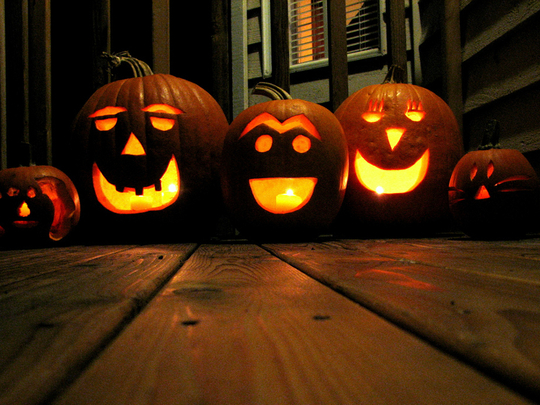
1. What is Halloween?
Halloween is a time of celebration and superstition for many Christians around the world. However despite this, its role in Christianity is widely debated, with some Christians distancing themselves from it entirely.
Halloween spans the line between autumn and winter, post harvest, which signifies times of plenty and scarcity - proverbial life and death.
The exact history of Halloween remains disputed, but it is thought to have originated with the ancient Celtic festival of Samhain (Samhain was the Druidic lord of death). The pre-Christian Celts lived around 2000 years ago in northern Europe, in what is now the UK, Ireland, and parts of northern France. Celts saw the time as the end of harvest and the onset of winter, which was considered a time of death. During Samhain, people would light bonfires and wear costumes to ward off roaming ghosts who had returned to Earth.
Long after the establishment of Christianity in what was once Celtic land, Pope Gregory III designated November 1 as a time to honour all saints and martyrs in the 8th Century. This was known as All Saints’ Day and shared similar customs to Samhain.
The evening before All Saints’ Day was known as All Hallows’ Eve. Over time this became Halloween. By the 20th Century, Halloween became a more material occasion and popular community-based activity which was specifically aimed at children.
2. What is done?
In modern times, people dress up in costumes. The original idea was to ward off evil spirits, but today it’s more for fun. Costumes are generally of a spooky nature, with witches, vampires, skeletons, and zombies being popular options.
Houses are decorated with ghoulish adornments, and a pumpkin placed outside by the front door.
Young children are encouraged to play “trick or treat”.
3. What is trick or treat
“Trick-or-treating” is an American addition to the occasion. It is suggested that it dates back to the early All Souls’ Day parades in England. The poor would beg for food and better-off families would give them pastries called “soul cakes” in return for their promise to pray for the family’s dead relatives.
The idea filtered down to contemporary children, who would go around houses asking for sweets or money. When someone opens the door, they are given an option to provide a treat, or suffer a trick. Tricks are generally light-hearted.
4. What are the pumpkins for
The pumpkin is known as a Jack-O-Lantern, and contrary to popular belief, it is not an American addition, despite pumpkins being indigenous to the Americas. The Jack-O-Lantern actually traces its lineage to Ireland, and the vegetable of choice was originally a turnip.
According to Irish myth, a man called “Stingy Jack” invited the Devil to have a drink with him. As his name implied, Stingy Jack didn’t want to pay for the drinks, so he asked the Devil to turn himself into a coin so that he could pay. The Devil obliged, but Jack chose to keep the coin and put it into his pocket next to a silver cross. The cross prevented the Devil from changing back.
Stingy Jack eventually freed the Devil, under the condition that he would not bother him for a year and that, in the event of Jack’s death, he would not claim his soul.
Jack eventually died, and because of his antics, God would not allow him into Heaven. The Devil, upset by the trick that Jack had played on him and keeping his word not to claim his soul, also would not allow Jack into Hell.
Instead, he sent Jack off into the night with only a burning coal to light his way. Jack put the coal into a carved-out turnip and has been roaming the Earth with it ever since. The Irish began to refer to this ghostly figure as “Jack of the Lantern”.








